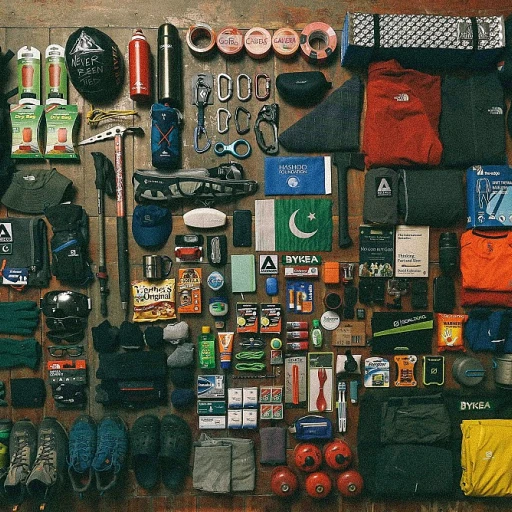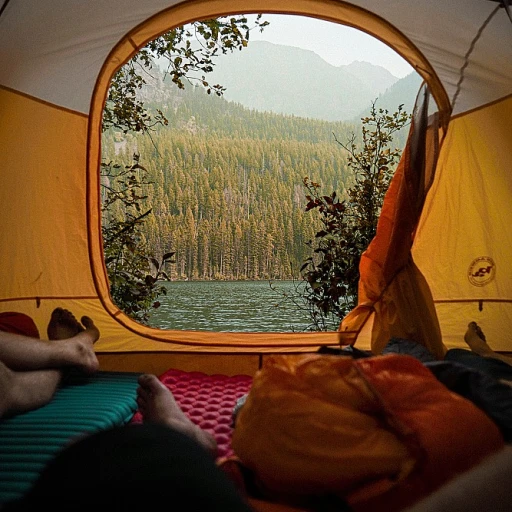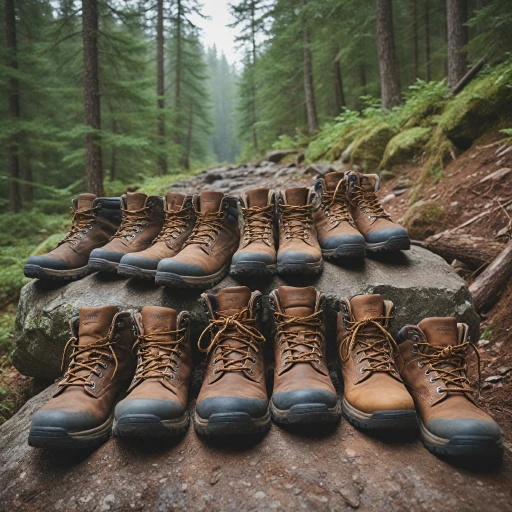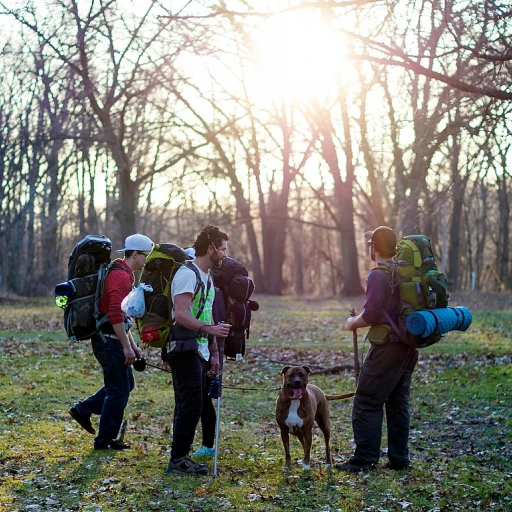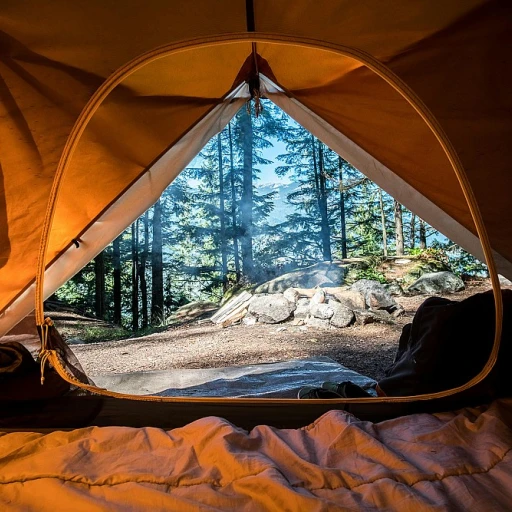
Choosing the Right Hiking Poles
Understanding the Types of Trekking Poles
Deciding on the appropriate hiking poles for your trekking adventure can be a daunting task given the myriad of options available. The first step is understanding the various types of poles hiking can involve and prioritizing the features that best suit your needs.
- Telescopic Poles: These collapsible poles are excellent for their adjustability and storage convenience. Perfect for those who tackle diverse terrain and need to adjust pole length accordingly.
- Fixed-Length Poles: These are sturdy and lightweight, ideal for consistent walkers who venture into predictable terrains where pole extension isn’t necessary.
- Folding Poles: Similar to tent poles, they fold into a compact size. A favorite for minimalist hikers looking for an easily storable option.
Considering Material and Features
The material of walking poles can significantly affect performance. Aluminum poles are durable and affordable, offering a good balance of weight and cost. However, carbon fiber poles are notably lighter and excellent for long treks, though they come at a higher price.
Other vital pole accessories to note include adjustable grip, pole tips, and tips rubber options. Whether you opt for rubber tips for a good grip on hard surfaces or carbide tips that can navigate rocky paths, ensure they cater to the terrain you'll encounter.
Adjusting Your Poles for Optimal Performance
Perfectly Aligned for Performance
Adjusting your hiking poles is crucial to optimize their performance and ensure you maintain stability and balance on the trail. Here’s how you can fine-tune them for maximum benefit.
First, when adjusting walking poles for flat terrain, it's essential to set the pole height so that your elbows form a 90-degree angle while holding the grips. This alignment keeps your arms at a comfortable level and reduces strain over time. When you're on an uphill climb, shorten your trekking poles slightly to aid in propulsion and balance. Conversely, for downhill sections, lengthen them for extra support and stability.
Remember, even the best hiking poles, like those from brands such as Black Diamond, require proper adjustment to reach their full potential. Consider using rubber feet or rubber tips if you're traversing hard surfaces to improve grip and reduce slippage. In contrast, carbide tips are advantageous on rocky or uneven terrain for their increased durability and traction.
For those exploring Nordic walking or needing extra support on challenging paths, pole accessories like tips baskets can prevent poles from sinking into soft terrains. Additionally, regular inspections for replacement tips can extend the life of your poles and ensure they remain effective on various surfaces.
Enhance your trekking experience with these tips to keep your gear in excellent condition, so you can focus on the beauty of the journey rather than worrying about equipment failure. For more specialized advice, consider embracing the natural support of a wooden hiking stick.
Techniques for Using Hiking Poles on Various Terrains
Mastering Different Terrains with Trekking Poles
Using hiking poles effectively across a variety of terrains requires more than just adjusting their height. To get the most out of your trekking poles, it's crucial to adapt your technique according to the terrain you're tackling. Here are some tips to help you navigate different landscapes with confidence:
- Uphill Climbs: When ascending, shorten your poles slightly. This adjustment will help maintain balance and allow for a more efficient arm swing. Plant the pole tips firmly and push off to transfer energy upwards, making the ascent less tiring.
- Downhill Descents: On the way down, lengthen your poles to improve stability and lessen the impact on your knees. Place the poles ahead of you, maintaining a good rhythm with your walking pace.
- Flat Terrain: Keep your poles adjusted to a standard length, ensuring they are parallel to the ground when your arms are at a right angle. Use the natural swing of your arms as you walk to enhance momentum with the trekking poles.
- Rocky and Uneven Ground: Engage your core and plant the poles securely for stability. Consider using rubber tips on hard rocks to enhance grip and minimize slipping. If the rocks are wet, carbide tips might offer better traction.
- Muddy Trails: Attach baskets to the tips of your poles to prevent them from sinking into soft ground. The wider support will help maintain balance, reducing the risk of falls.
Incorporating these techniques with a suitable set of hiking boots can significantly enhance your overall hiking experience, particularly in varied terrains. For further insights on optimizing backpack weight, explore the benefits of an ultralight backpacking cot, which complements your trekking setup.
Maintaining Your Hiking Poles
Maintaining Your Trekking Companions
Caring for your hiking poles is essential to ensure their longevity and performance on the trails. Simple maintenance routines and proactive steps will keep your trekking poles reliable companions for every hike.- Check for Damage: Regularly inspect your poles for any signs of wear or damage, especially after a challenging trek. Look at the pole tips as these endure the most impact, whether you have metal tips, carbide tips, or rubber tips. Replacement tips are available if needed to mend any woes.
- Cleaning After Use: After a rewarding day in the wilderness, take time to clean your poles. Dirt and grime can compromise the integrity of pole joints. Use a damp cloth to wipe down the shaft and accessories. Be sure to pay attention to rubber tips and walking sticks, removing any stuck debris.
- Dry Thoroughly: Moisture is a foe of most outdoor gear, hiking poles included. Make sure poles are completely dry before storing them away. This step helps prevent rust and the development of mold on rubber baskets and grips.
- Adjust and Tighten: Habitually check the locks and adjustments. Ensure all components, like the pole grips, tighten securely to avoid accidental collapse during use. Remember that parts such as baskets and grip sections benefit from periodic checks.
- Storage Tips: Store your poles in a cool, dry place. Heat or direct sunlight can cause materials such as rubber feet or the black diamond components to degrade faster. Keeping them in a storage bag can also protect them from dust and impacts.
Integrating Hiking Poles with Your Hiking Boots
How to Use Hiking Poles to Complement Your Hiking Boots
Integrating hiking poles with your hiking boots can make all the difference in how you experience the trail. This tandem ensures better stability, support, and comfort. Here are some insightful tips:
- Maintaining Correct Posture: Your hiking poles should help you keep a good posture. When used with proper footwear, they're a great way to maintain balance when the terrain demands more focus. Always ensure your boots offer a stable base, complementing the pole’s support.
- Coordinate Movements: Synchronize the movement between your legs and your poles. This coordination results in a natural walking rhythm on even the most challenging terrains, whether rocky surfaces or smooth trails.
- Optimize Traction: Hiking boots with effective grip can work wonders with carbide tips on trekking poles. For rough, hard surfaces, consider poles hiking with rubber tips or even metal tips accompanied by proper trekking pole accessories like tips baskets.
- Adjusting for Inclines and Declines: Adjusting your poles properly will ensure the maximum benefit of your hiking boots’ grip. Remember, on inclines, your trekking poles should offer more support while your boot grips stabilize every step.
- Regular Inspections: Don't overlook the maintenance of both poles and boots. Regularly check for replacement tips or worn out rubber feet, and view these as essential accessories that contribute to the overall efficacy and comfort of your hike.
By understanding the synergy between your trekking poles and hiking boots, you can optimize each hike’s comfort and safety, ensuring that time spent on the trail is both enjoyable and productive.
Common Mistakes to Avoid When Using Hiking Poles
Common Missteps in Using Hiking Poles
For seasoned hikers, trekking poles are indispensable tools, but even experienced adventurers can make errors with poles that may affect their hiking efficiency and comfort. Here are some pitfalls to avoid ensuring you get the best out of your hiking poles:
- Improper Length Adjustment: One common mistake is not adjusting poles to the suitable length for different terrains. Remember, a proper setup is crucial for maintaining balance and reducing strain. After selecting the right poles, ensure they are set correctly for uphills, downhills, and flat surfaces.
- Overlooking the Grip and Strap Usage: Many hikers forget the importance of using pole grips and straps properly. By neglecting this, you might experience fatigue or discomfort in hands and wrists. Ensure a good grip and utilize straps for better support.
- Inappropriate Accessory Use: Misusing pole tips, such as employing metal tips on hard surfaces, can lead to unwanted noise and damage. Instead, opt for rubber tips or baskets suited for varied terrains. Cross-reference each accessory with the intended terrain to maximize pole effectiveness.
- Neglecting Pole Maintenance: Regular maintenance is crucial to prolong the lifespan of your hiking poles. Always check for wear and tear on your pole accessories and consider replacement tips to keep them in good condition over time, be it rubber feet or carbide tips.
- Ignoring the Integration with Hiking Boots: Hiking poles work best when used in tandem with suitable hiking boots. Ensure that both your poles and boots complement each other to enhance stability and reduce effort during your treks.
- Improper Storage: How you store your hiking poles after your trip can affect their longevity. Avoid leaving poles in damp conditions and always dry them thoroughly before storing away. Consider disassembling them for compact storage, making them ready for your next adventure.
By avoiding these common pitfalls, your trekking poles will not only enhance your hiking experience but also ensure your trusty walking companions last for many trails to come. Don’t underestimate how fine-tuning each element, from replacement pole tips to hiking boots, can make all the difference.


